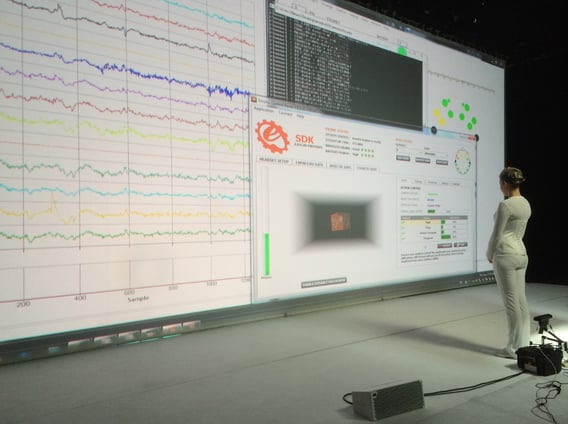Juri Didevič – media artist, performer, director, researcher
WHAT IS THE PLACE OF MAN IN THE HUMAN-MACHINE ART’S GENERATION SYSTEM?
Russian physiologist Bekhtereva, who discovered it in 1968, assumed that the error detection network might be different in creatives. The results of a more recent study Beaty et al (2018) . It turned out that a creative person has three neural networks involved simultaneously. The first is responsible for imagination, spontaneous ideas and thoughts. The second controls and brings these to awareness. The third works as a "switch" between the first two. Supplementing our internal resources of creativity with external AI-based computational methods would allow true human-machine symbiosis allowing anyone to create truly original works of art. But this is not happening yet. Why? From the embodied cognition perspective, it is possible that our individual sensorimotor abilities are embedded in a broader biological, psychological world and cultural context. I hypothesise that inserting tangible user interfaces (TUI) into the human-AI symbiotic creation of narratives can uncover our subconscious (in a broader terms) thus upgrading the system.
References: Beaty, R. E. et al. (2018). Robust prediction of individual creative ability from brain functional connectivity. Proceedings of the National Academy of Sciences, 115(5), 1087-1092.


ARTIST STATEMENT
The main direction and scope of human-machine interaction (HCI), interaction with computer systems with self-adaptation, self-awareness and self-expression. In my experimental theater productions and performances, I use interactive real-time computer systems, physiological and emotional computing technologies, in particular brain-computer interfaces (BCI) for controlling video projections, light and multi-channel sound.
The goals and objectives that guide my artistic practice are the expansion of the boundaries of artistic, aesthetic and emotional experience with the help of HCI systems using neurotechnologies and BCI systems, emotional computing and AI. My research and prototypes in this area are just means to overcome the prevailing stereotypes of perception, in search for authentic means of expression, techniques and tools for creating new artistic forms. Marshall McLuhan in his book "Understanding Media" expressed the idea that has become my creative motto: "The serious artist is the only person able to encounter technology with impunity, just because he is an expert aware of the changes in sense perception".
The development of machine learning systems ignited a new direction in the art of New Media: Texts, Images and Videos created by Artificial Intelligence and a wave of delight and hatred among amateurs and professional artists. Some AI algorithms that generate art already have millions of users. Millions of people are sitting and generating texts and images without actually asking the most important question: what is their place in this human-machine art generation system? There are millions of hours of machine processing time and man-hours spent on the formation of text queries to AI systems, however, these are mostly ordinary and repetitive. Probably a closer connection between the human author and AI co-author would allow us to exceed the limitations of current human cognition and perception. This evolutionary mechanism of stereotypical modes of perception and behavioural patterns controls and protects us from errors but, unfortunately, also constrains our ability to be creative.
